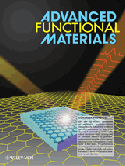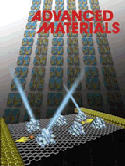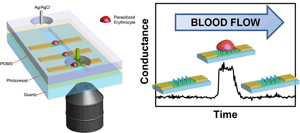Research Highlights from The Carbon Laboratory
Applications of Graphene in Energy and Environment
 |
 |
 |
|
An interface engineering process to deploy graphene film as the anode polymer solar cells is demonstrated. By modifying the interface between the graphene anode and the photoactive layer, the power conversion efficiency of the solar cells reaches ~83.3% of control devices that use an indium tin oxide (ITO) anode. |
An electrospun graphene–polymer nanocomposite that exhibits wideband saturable absorbance for laser pulse shaping. A freestanding, mechanically robust membrane which is composed of nanofiber network of graphene-polymer nanocomposite is fabricated by electrospinning and applied as a mode locker in fiber lasers. |
A solution-processible approach to fabricating hybrid TiO2-graphene photoconducting matrices that are printable and spin-castable is studied. The technique produces extended heterojunctions of TiO2 and graphene, permitting short collection paths for electrons. | |
|
|
|
Applications of Graphene in Bioengineering and Biotechnology
ACS Nano 5, (2011) 7334. |
Origin of Enhanced Stem Cell Growth and Differentiation on Graphene and Graphene Oxide The molecular origin of accelerated differentation is investigated by studying the binding abilities of G and GO toward different growth agents. Interestingly, differentiation to adipocytes is greatly suppressed on G because insulin, which is a key regulator for the synthesis of fatty acids, is denatured upon π–π adsorption on G; in contrast, GO does not interfere with adipogenesis due to electrostatic binding with insulin. The different binding interactions and their subsequent influence on stem cell growth and differentiation are ascribed to different degrees of π–π stacking and electrostatic and hydrogen bonding mediated by G and GO. |
|---|---|
Nano Letters 11, (2011) 5240. |
Flow Sensing of Single Cell by Graphene Transistor in a Microfluidic Channel We developed a graphene transistor array integrated with microfluidic flow cytometry for the “flow-catch-release” sensing of malaria-infected red blood cells at the single-cell level. Malaria-infected red blood cells induce highly sensitive capacitively coupled changes in the conductivity of graphene. Together with the characteristic conductance dwell times, specific microscopic information about the disease state can be obtained. |
Adv. Mater. 24, (2012) 4285. |
Fluorinated Graphene for Promoting Neuro-Induction of Stem Cells Surface engineering of substrate offers the possibility of controlling the physiological functions of cells at the molecular level. The key features which are known to be important for biological recognition are surface chemistry, topography and compliance. Here, we study the use of fluorinated graphene as an extracellular matrix for the enhanced adhesion, differentiation and proliferation of mesenchymal stem cells (MSCs). Interestingly, we found that fluorinated graphene promotes the differentiation of MSCs towards neuronal lineages. Cell alignment using printed polydimethylsiloxane channel arrays on fluorinated graphene further enhances the neuro-induction of MSCs even in the absence of chemical inducers. The origin of these enhancements was investigated by studying the surface topography and energies of fluorinated graphene vis-à-vis unfunctionalized graphene. These results establish fluorinated graphene as a useful template for neuro-tissue regeneration. |


